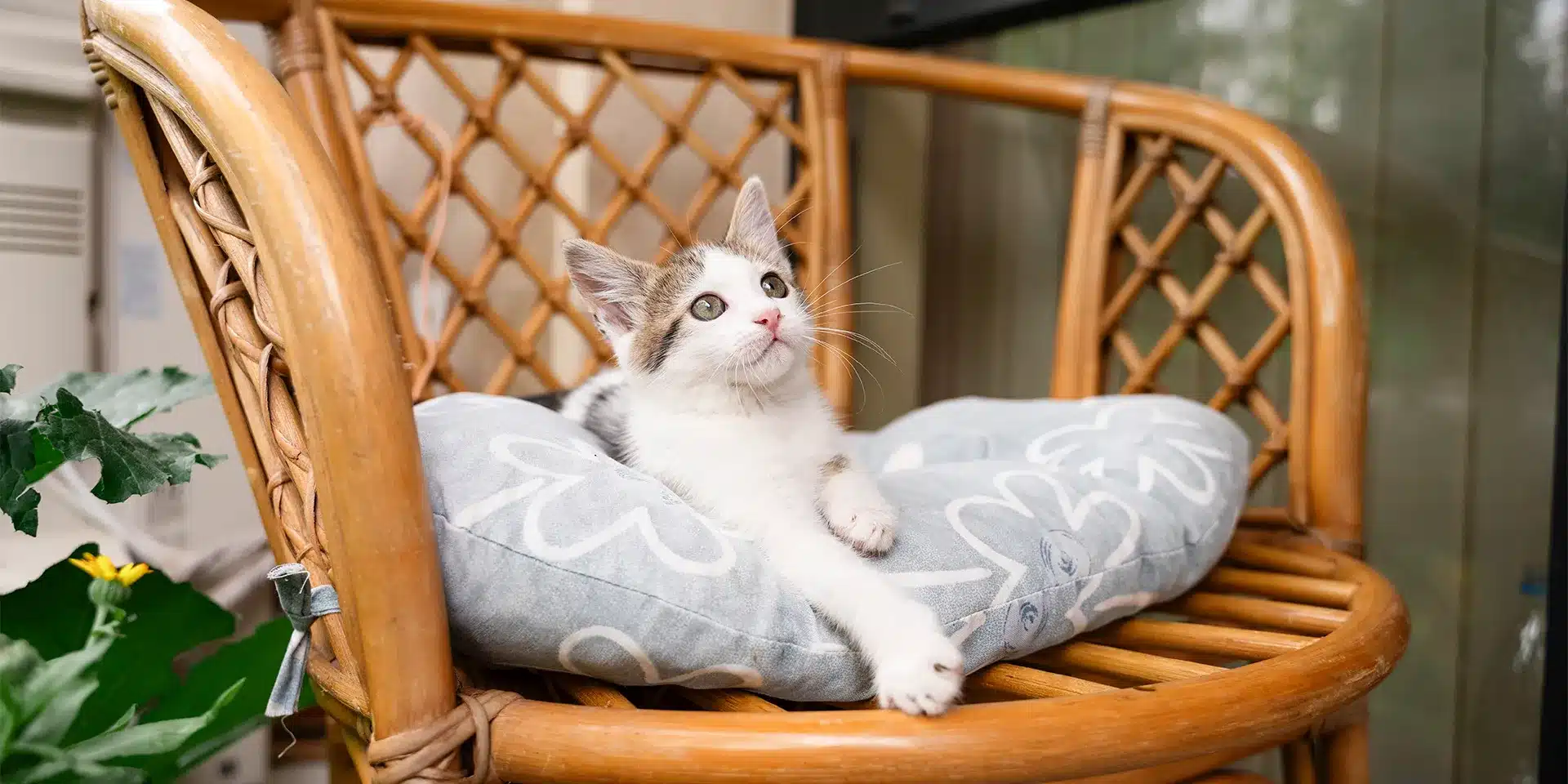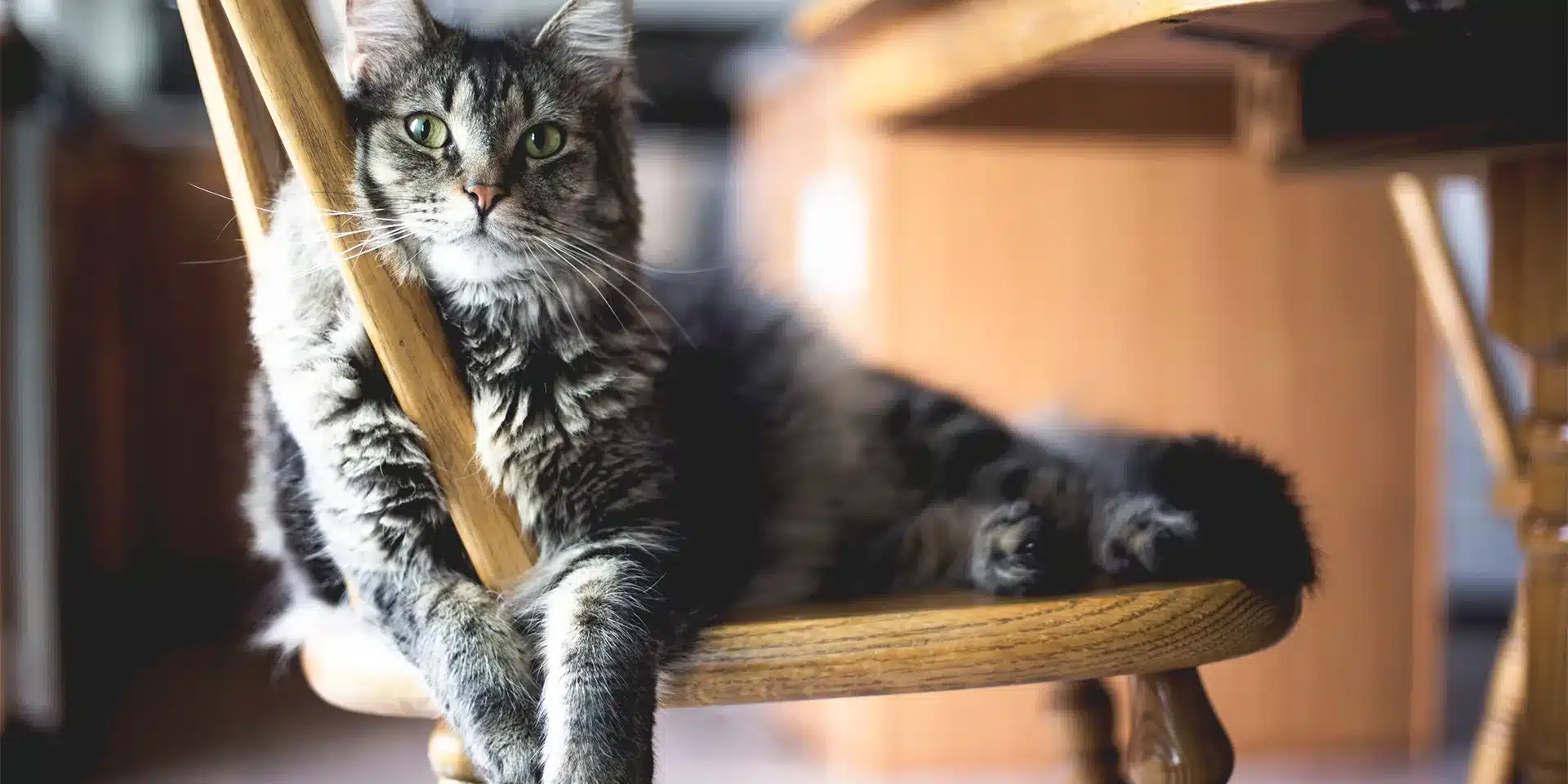Resting on outdoor furniture with your beloved cat is really relaxing. But once your cat considers the furniture his “personal territory,” he will reinforce his sense of belonging by scratching, scent-marking, and other instinctive behaviors. Over time, the originally neat space may also become a mess. If these problems are causing you a headache, it’s time to think of some ways to regain control of furniture.
Why Do Cats Like Outdoor Furniture?

Before we delve into how to get cats off outdoor furniture, we need to understand why they like it so much. Only by understanding the reasons behind cats’ behavior can we find effective solutions.
Cats are naturally curious and like to stay in high and flat places to explore their surroundings. Outdoor furniture happens to meet these conditions and is their ideal habitat. Cats also have a strong sense of territory and are used to “claiming” their regular areas through scent marking. Once they stay on a piece of furniture, they are likely to “visit” it again and again. In addition, many outdoor furniture are equipped with soft cushions, which are safe and comfortable for cats, further strengthening their dependence on and love for these “new territories”.
Ways to Keep Cats Off Your Outdoor Furniture
Below we will introduce a variety of practical ways to kepp cats away from your outdoor furniture without harming them, helping you create a harmonious outdoor space where both people and pets can coexist peacefully.
1. Use Scent Deterrents

Cats are very sensitive to certain scents and especially dislike the smell of lemon, orange, and tangerine. You can make your own citrus spray by mixing lemon, orange, or tangerine juice with water in a 1:3 ratio. Shake well in a spray bottle and spray it onto your furniture.
Vinegar spray is also a simple and easy option. Mix white vinegar and water in a 1:3 ratio. Before use, be sure to test it on an inconspicuous part of the furniture to confirm that the vinegar will not cause discoloration or damage the furniture surface.
If you make coffee at home, you can put the dried coffee grounds into a mesh bag and place it on the edge of furniture or in areas where cats often move around. The scent of coffee can also repel cats. However, you must place the mesh bag where they can’t reach it to avoid accidentally ingesting it.
Important Note: Avoid using essential oils like tea tree, spearmint, or peppermint to repel cats, as their livers cannot effectively metabolize the ingredients in them, and contact can cause poisoning.
2. Changing the Texture of Furniture

Cats hate sticky touches and feel uncomfortable when their claws touch such surfaces, so they tend to avoid them. You can stick double-sided tape on places where cats often scratch, such as chair legs, armrests, etc. It’s recommended to choose strong and non-marking double-sided tape and replace it regularly to prevent dust and dirt from reducing the stickiness.
Tin foil is a common tool for repelling cats. Cats don’t like the cool, slightly wrinkled texture of tin foil, as well as the “rustling” sound produced when stepping on it. You can spread tin foil in areas where cats frequently move around, using these sounds and touches to prevent cats from approaching. Over time, cats will associate these areas with discomfort and gradually avoid staying there.
3. Using Sensor Devices

Automatic sprinkler has a built-in sensor that sprays a gentle mist of water when cats approach, alerting cats with the sudden splash and prompting them to stay away from the area. The device is harmless to cats and only uses water mist to effectively repel them.
Ultrasonic cat repellers emit high-frequency sound waves that are inaudible to human ears but sensitive to cats, making cats feel uncomfortable and naturally stay away without causing harm to them. However, if there are pregnant cats or kittens at home, avoid using this device to prevent a stress response.
4. Provide an Alternative Spot for Cats

Now that we have a comfortable outdoor leisure area, we might as well prepare outdoor cat beds for cats, so that they can have their own little world instead of using our furniture as their “territory”. Choose suitable cat beds according to the size of the cats, and put some their favorite toys to make them warm and comfortable. Place the cat beds in a quiet corner of the yard or near furniture to encourage cats to rest, play and explore there, reducing their dependence on furniture.
Cat trees can well meet the natural scratching and climbing needs of cats. Their multi-layer design, hammocks, dangling toys and other features not only stimulate interest in exploration, but also help improve a cat’s physical agility. Most cat trees are made of sisal rope, short plush fabric and particle board, which are both strong and durable, and can provide an ideal scratching feel. This helps cats shed old keratin and release stress, thereby maintaining a good mood and a healthy state.
5. Training Your Cat

Training cats to stay away from outdoor furniture requires a combination of positive guidance and gentle intervention, so that cats gradually learn that “these places don’t belong to me”. First, you can use verbal commands such as “hush” or softly say “no”. When the cat tries to jump onto the furniture, and gently pick it up and take it down, repeatedly to let the cat establish behavioral associations. At the same time, when the cat chooses to rest in the right place, such as a cat bed or cat tree, reward it immediately with treats, petting, or praise to reinforce the positive behavior.
Taking advantage of the fact that cats like to bask in the sun, place cat beds or cat trees in sunny spots. Day after day, cats will gradually regard these spaces as their own “territory” and naturally stop occupying your outdoor furniture frequently.
6. Set Up Physical Barriers
The protective net is a relatively gentle physical barrier that can effectively keeps cats away from specific areas without affecting the overall appearance and sight. PVC coated wire mesh or nylon pet safety nets are good choices. When installing, the net can be fixed to the railing or furniture with cable ties or stainless steel hooks. If necessary, it can be equipped with suction cup hooks and a wire ropes to enhance stability; if used in grassy or muddy areas, it is recommended to use gardening ground nails to press the bottom to prevent displacement and cats from drilling into it.

High fences are suitable for cats with strong jumping abilities. They can form a double barrier in vision and action to prevent them from approaching designated outdoor furniture. It’s generally recommended to choose a height of at least 5 feet. Common materials include wooden fences and painted metal fences, which can be selected according to the overall decoration style of your patio. To avoid hurting cats, don’t choose wrought iron fences with decorative metal spikes; at the same time, avoid designs with too large gaps to prevent cats from getting their heads or bodies stuck when climbing over.
To prevent your cat from sneaking onto your outdoor furniture when it’s not in use, you can cover it with a removable waterproof cover. This cover not only effectively blocks cats from entering, but also protects the furniture from the elements, helping to preserve its appearance and lifespan.
7. Clean Your Outdoor Furniture

Cats usually mark their territory by scent, regular cleaning of outdoor furniture can effectively prevent cats from repeatedly occupying the same place. You can use enzyme cleaners to deep clean outdoor furniture, which can break down the proteins in cat urine or secretions, remove residual odors, and reduce the likelihood that cats will return.
Food crumbs left on outdoor furniture can attract not only your own cats but also stray cats nearby. To prevent them from using your furniture as a potential feeding spot, make sure to clean your tables and seats after every meal, leaving no crumbs behind.
Final Thoughts
It’s not difficult to keep cats away from your outdoor furniture. Once you fully understand the reasons behind the cats’ behavior and choose appropriate methods, you can effectively reduce their “claim” of furniture. We believe that as long as you manage it carefully, you can peacefully share the outdoor space with your cat.




